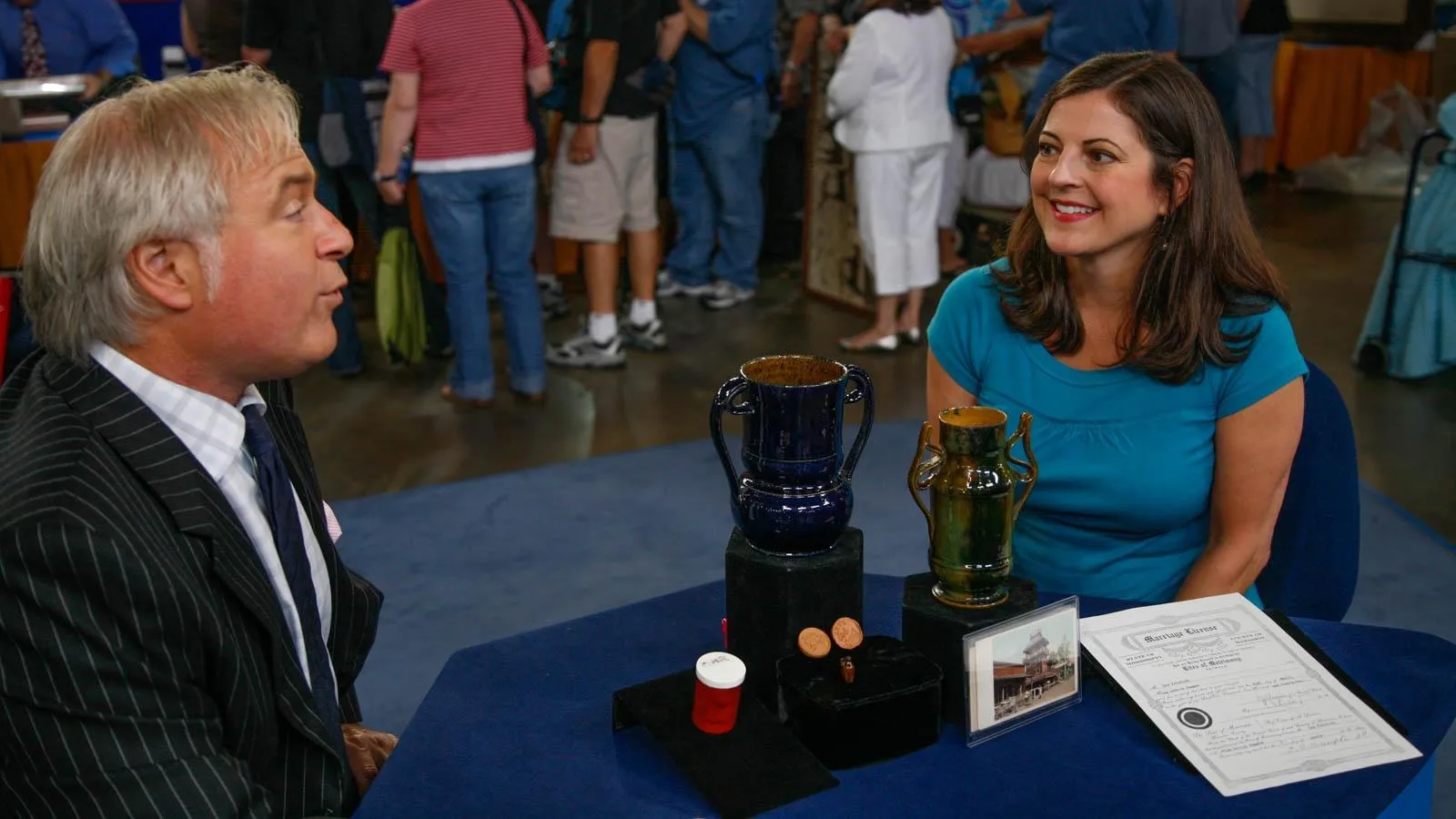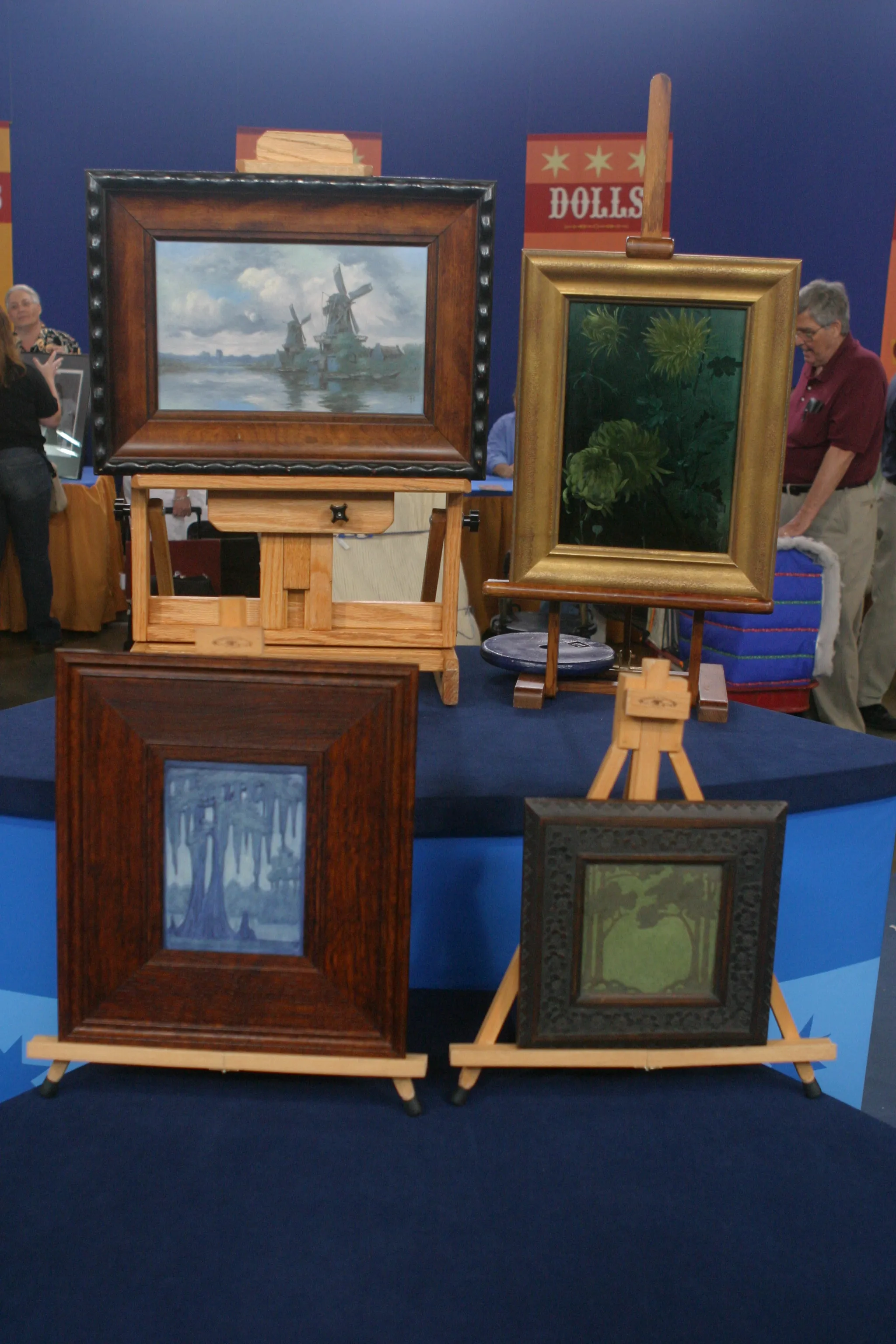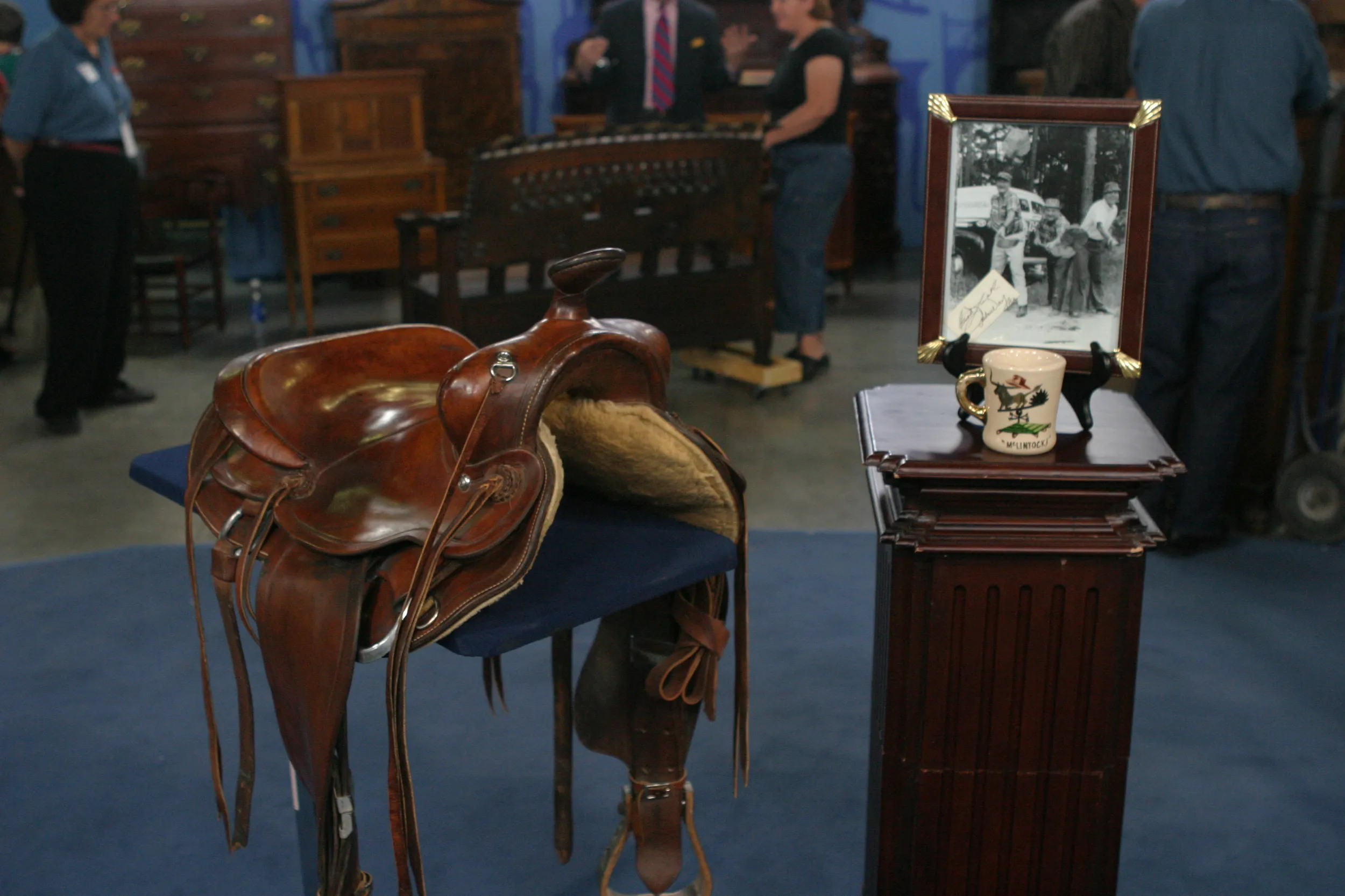GUEST: This is a painting that I inherited from my father, who passed away last year. He was a stockbroker and, uh, made many trips to New York City through his career. And he saw this painting in Houston in a gallery one time, and just, it was something that caught his eye, and he knew he had to have it and purchased it, and it always hung in a special place in his home. He even took me to New York one time, and as we were on Wall Street, going to the Stock Exchange, he turned around, and he said, "Look, there's Trinity Church."
APPRAISER: Oh, wow.
GUEST: And, you know, "That's in the painting that we..."
APPRAISER: So, was, was he an avid painting collector?
GUEST: Yes, he had, uh, quite an extensive art collection.
APPRAISER: Terrific.
GUEST: Uh, this was one of, one of his better paintings, mm-hmm.
APPRAISER: Well, the artist is Guy Wiggins.
GUEST: Mm-hmm.
APPRAISER: And the painting is clearly signed here in the lower right. And he was amongst three generations of Wiggins, all of whom were painters. He had a son who was a painter, and his father, Carleton Wiggins, was a painter. And Carleton Wiggins is a painter who's known a little bit more for doing pastoral scenes. He eventually settled in Old Lyme, Connecticut. He was part of the Old Lyme, Connecticut, artists' colony. And that's really where Guy Wiggins grew up. Guy Wiggins ultimately enrolled in the National Academy of Design. Years later, he was to become a fully fledged member of the National Academy of Design, but he was really somewhat of a prodigy. And at age 20, he had a painting that was accepted into the permanent collection of the Metropolitan Museum of Art in New York.
GUEST: Oh, my goodness.
APPRAISER: Pretty impressive. He is an artist who not only did Connecticut scenes, as his father did, but he also did New York scenes, and in particular, New York winter snow scenes. And you could say this is the kind of thing that he's really best known for.
GUEST: Mm-hmm.
APPRAISER: He was really captivated by showing winter scenes in Manhattan, and, and, and the people huddling down the street, walking down the street.
GUEST: Right.
APPRAISER: The painting's also interesting 'cause not only is it a really good example of his work, but the back of the painting also tells a little bit of a story. Now, you said that your dad had acquired the painting in Houston.
GUEST: Yes, that's correct.
APPRAISER: And what's so great about this is, we have what looks to be the original label from the gallery in Houston, Texas, the name of the artist, the name, the title of the painting, their inventory number, the size of the painting, and the price. $2,500.
GUEST: Right.
APPRAISER: What's also great about this painting is the fact that we've got the title of the painting: Old Trinity, New York Winter. Signed again, "Guy Wiggins," as it is on the front, and then dated 1930. When would he have acquired this painting?
GUEST: It would have been either in the late '50s or early '60s.
APPRAISER: $2,500 way back when was still a lot of money.
GUEST: Right.
APPRAISER: But the demand for his paintings has really increased a great deal. And there's tremendous interest in 19th- and 20th-century American paintings. And the prices have really gone up accordingly over the years. We'll put this back to the front.
GUEST: Okay.
APPRAISER: Today, if this painting were offered at auction, we would probably estimate it at $50,000 to $80,000.
GUEST: (softly): Whoa.
APPRAISER: I don't know if that surprises you or not.
GUEST: That-- yes, it surprises me.











